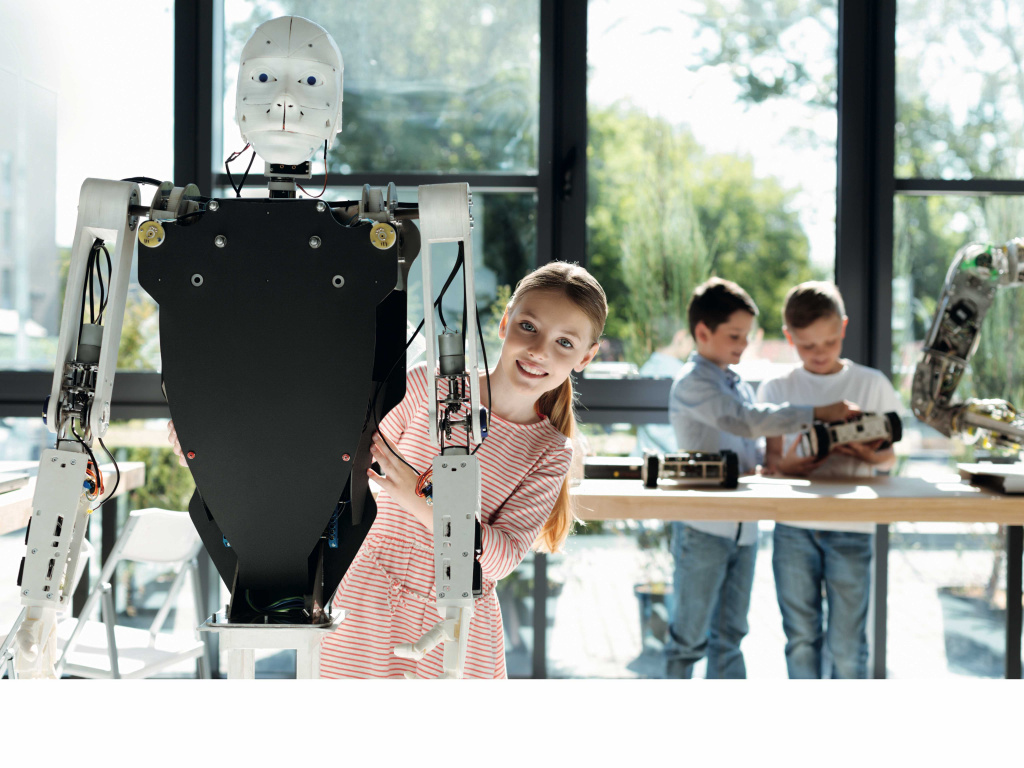
These questions around what intelligence is and what it means have intrigued and inspired researchers at Harvard’s Project Zero for over 50 years, and our inquiry suggests that intelligence, far from being singular, innate and fixed, is in fact multifaceted and learnable. Rather than equating being smart with scoring the highest test scores, or being born with a fixed amount of ‘smartness’, we believe that being smart is having a profile of learnable intelligences that enables one to identify and solve problems, and to create products that are of value in contemporary society. In short, we propose that intelligence is multiple, dispositional and learnable.
Intelligence as Multiple
What do we mean when we say that intelligence is multiple? Our research suggests that intelligence is not a unitary ability; rather, it is best described as a complement or profile of distinct strengths – verbal, logical/mathematical, bodily-kinaesthetic, musical, spatial, interpersonal, intrapersonal and naturalistic.1 This definition stands in opposition to conventional educational practices that treat each and every learner in exactly the same way. This lack of differentiation fails to recognise that, in practical terms, there is no such thing as an ‘average’ learner, and so designing instruction for the average student makes little sense.
While we possess all of the intelligences, how we have them varies. Each of us possesses a unique complement or profile of intelligences that differ in their relative strengths and weaknesses. Being more advanced in one intelligence is not predictive of development in another. Some of us may be good in thinking with visuals but are less adept at deductive reasoning, detecting patterns and logical thinking. Others may be excellent at interacting with a diverse range of people, but are less advanced in their fine and gross motor skills.
Our intelligences are best understood as potential that may or may not be developed to their fullest extent possible. The extent to which we do so rests on a triad of factors: the values of the culture we live in that either favours or diminishes particular intelligences; the opportunities that are available to us to develop particular intelligences; and the personal decisions made by individuals as to whether they want to focus efforts on developing particular intelligences. Our intelligences are developed and honed through the constant interaction of biological and environmental factors. They are not fixed at birth, and most certainly cannot simply be captured by a test score.
What are the implications of intelligence as multiple on the way we teach and learn? Our intelligences are expressed in the way we perform our understandings, whether it is synthesising ideas, communicating perspectives, creating products, solving problems, raising questions or offering explanations. Hence, evaluating intelligence means focusing on how learners visibly demonstrate their understanding in flexible ways across a range of novel contexts, rather than how much they know or have mastered and are able to reproduce on a test.
Keeping in mind that our learners are intelligent in multiple ways makes us more reflective in the way we design learning experiences for our learners. Two approaches to designing learning experiences are instructive here: individualisation and pluralisation.2 Firstly, when we make a concerted effort to learn as much as we can about each learner, we begin to build a picture of their individual profiles of intelligences. With those in mind, we can design opportunities for them to learn and demonstrate their understanding in ways that are most comfortable for them. We are also more intentional when we design challenges that are not within their comfort zone but that are worthwhile capacities for them to develop.